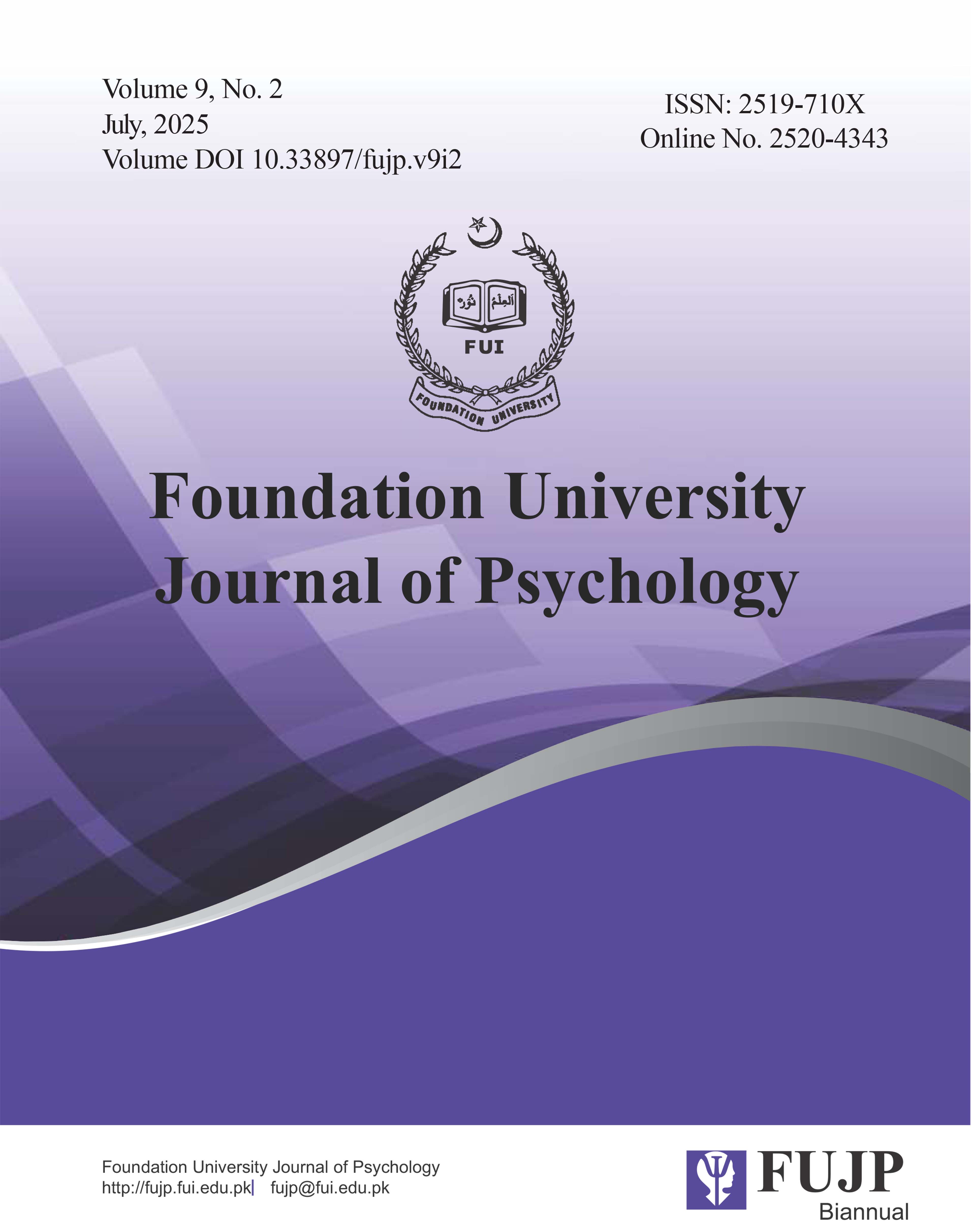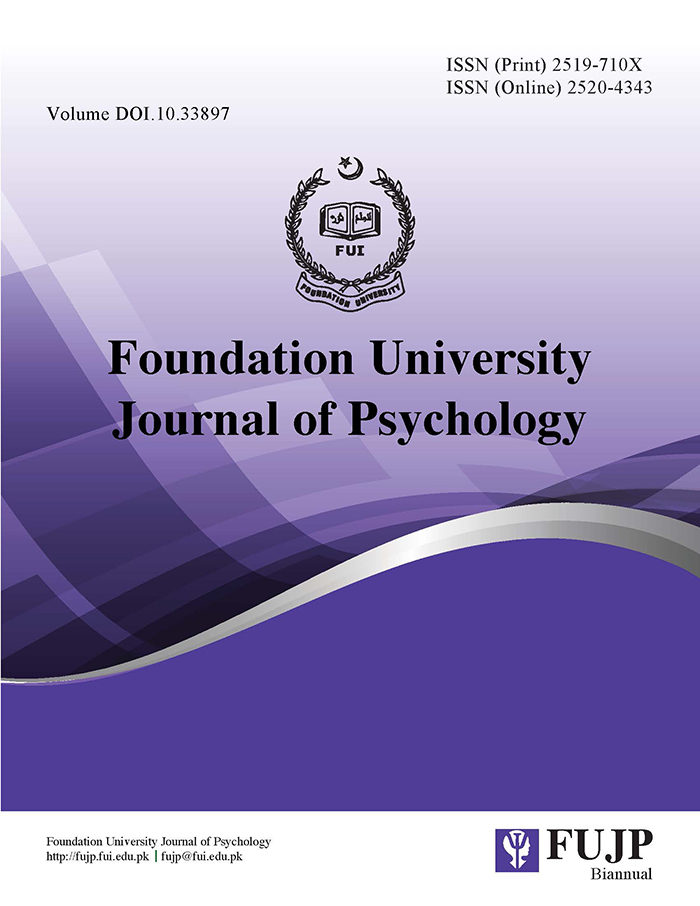Experiences of Pakistani Women Visiting Bari Imam Shrine
Beliefs Practices, and Cultural Significance in Pakistan
DOI:
https://doi.org/10.33897/fujp.v9i2.875Keywords:
Spiritual devotion, Cultural significance, Empowerment, Cultural heritage, Ancestral customsAbstract
Background. Shrines are very important in Pakistan because they provide sacred space for worshipping and communal congregations, especially for women who participate in practices based on religion, culture, and social norms. The research will focus on understanding the belief systems and practices governing experiences related to visiting shrines that embody a true reflection of cultural significance for such sites.
Method. Using a qualitative approach, interviews with 16 women aged 25 to 35 who frequently visit the Imam Bari shrine were conducted in Islamabad, Pakistan. Interviews in Urdu were executed through Braun and Clarke's thematic method of analysis in 2012. Transcripts and field notes detailed numerous types of experiences and varying perspectives associated with shrine visitation.
Results. Participants described deep connection with the divine through rituals and prayers to receive blessings, guidance, and healing at the shrine. Many reported that they experienced peace and tranquility and solace in the shrine's spiritual atmosphere.
Conclusion. The study emphasized empowerment and resilience in women since the shrine community accepts, unites, and offers them the opportunity for mutual support and emotional expression. Moreover, it had a strong link with the cultural traditions and ancestral customs as well as familial obligation. Awareness of these beliefs and practices would provide an understanding to the cultural legacy and social significance of shrine visitation among women in Pakistani society.
Downloads
References
Aftab, T. (2022). Biographical notices of women Sufis based on oral traditions collected by visiting their shrines. Sufi Women of South Asia, 456-494. https://doi.org/10.1163/9789004467187_013
Canel-Ç?narba?, D., Çiftçi, A., & Bulgan, G. (2012). Visiting shrines: A Turkish religious practice and its mental health implications. International Journal for the Advancement of Counselling, 35(1), 16-32. https://doi.org/10.1007/s10447-012-9162-8
Charan, I. A., Wang, B., & Yao, D. (2018). Cultural and religious perspective on the Sufi shrines. Journal of Religion and Health, 57(3), 1074-1094. https://doi.org/10.1007/s10943-018-0558-6
Charan, I. A., Xin, S., Zezhuang, W., & Yao, D. (2020). Rethinking efficacy: People’s perception of ritual healing and trance religious practices at shrines in Pakistan. Asian Journal of Psychiatry, 52, 102020. https://doi.org/10.1016/j.ajp.2020.102020
Charan, I. A., Xin, S., Zezhuang, W., & Yao, D. (2020). Rethinking efficacy: People’s perception of ritual healing and trance religious practices at shrines in Pakistan. Asian Journal of Psychiatry, 52, 102020. https://doi.org/10.1016/j.ajp.2020.102020
Farooq, A., & Kayani, A. K. (2013). Changes in traditions and material exchanges. South Asian Survey, 20(1), 150-161. https://doi.org/10.1177/0971523114559819
Ghadially, R. (2005). Devotional empowerment: Women pilgrims, saints and shrines in a South Asian Muslim sect. Asian Journal of Women's Studies, 11(4), 79-101. https://doi.org/10.1080/12259276.2005.11666001
Glik, D. C. (1988). Symbolic, ritual and social dynamics of spiritual healing. Social Science & Medicine, 27(11), 1197-1206. https://doi.org/10.1016/0277-9536(88)90349-8
Jassal, S. T., & Akcapar, S. K. (2019). Ziyaret and practical spirituality: Women’s shrine visits in Anatolia. Practical Spirituality and Human Development, 353-375. https://doi.org/10.1007/978-981-13-3687-4_20
Massam, K. (2021). Female saints – Women saints since 1920: A wider circle? Women in Christianity in the Modern Age, 83-108. https://doi.org/10.4324/9780429324772-3
Osterberg, A. C. (2018). The role of roadside shrines in the everyday lives of female devotees in Mumbai. South Asia Multidisciplinary Academic Journal, (18). https://doi.org/10.4000/samaj.4565
Richards, G. (2021). New rituals and the dynamics of cultural tourism practices. Rethinking Cultural Tourism. https://doi.org/10.4337/9781789905441.00010
Sarfraz Ahmad. (2022). Socio-economic and cultural impact of Sufi shrines: A case study of Mitthan Kot. Sukkur IBA Journal of Educational Sciences and Technologies, 2(1), 35-47. https://doi.org/10.30537/sjest.v2i1.1087


.jpg)

